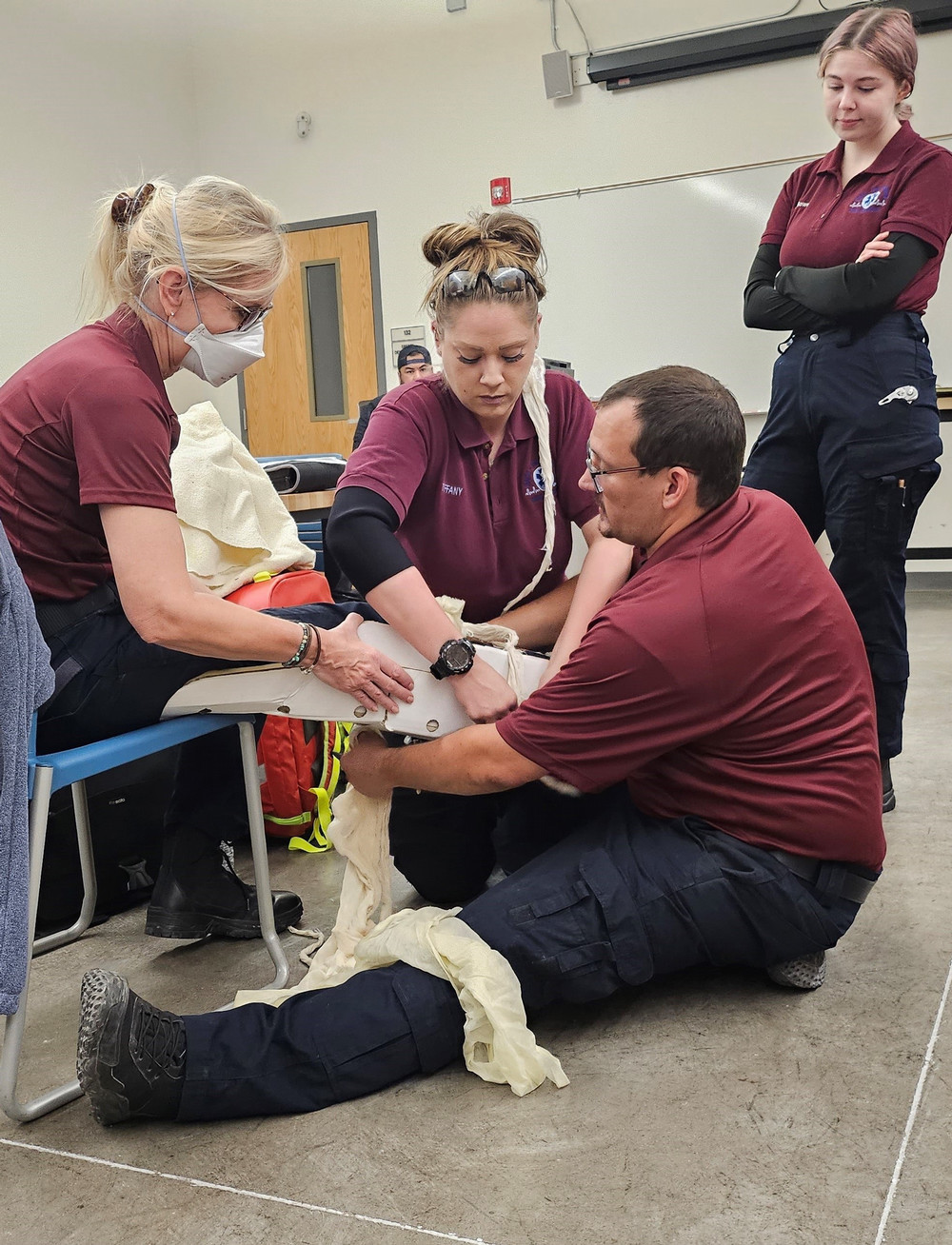About

A Fast-Paced, Challenging and Rewarding Career
Pre hospital emergency medical care is a challenging and exciting profession. People’s lives often depend on the quick reaction and competent care of emergency medical technicians (EMTs) and paramedics.
EMS professionals may work at any of four different levels: first responder, EMT–basic, EMT–intermediate, and paramedic.
Upon successful completion of training, students are eligible for employment in a variety of emergency medical systems nationwide—in fire departments, municipal services, private ambulance services, federal services, industry, hospital emergency departments, and hospital-based ambulance systems.
DACC offers all levels of EMS education, as well as an opportunity to earn an associate of applied science degree at the paramedic level. Successful completion of an EMS program will allow for certification/licensure testing at the state and national level.
The Emergency Medical Services program is nationally accredited by the Committee on Accreditation on Education for the EMS Professions and approved by the New Mexico Office of Health Emergency Management.
Program Goals
Mission, Goals and Student Learning Outcomes
CAAHEP: Paramedic Program Goals
Paramedic Program Goal:
To prepare Paramedics who are competent in the cognitive (knowledge), psychomotor (skills), and affective (behavior) learning domains to enter the profession.
Mission Statement
To prepare associate degree students and/or students enrolled in certificate courses within the Emergency Medical Services Program with the necessary skills and competencies to function as part of a comprehensive EMS response under medical oversight.
Department Goal
The Paramedic program will offer a program that meets CoAEMSP standards with or without exit points at the Emergency Medical Technician Intermediate, and/or Emergency Medical Technician Basic, and/or First Responder levels.To prepare graduates who will be able to demonstrate:
- Comprehensive knowledge of EMS systems, safety/well-being of the EMS provider, and medical/legal and ethical issues, which is intended to improve the health of EMS personnel, patients, and the community.
- Knowledge of the anatomy and physiology of human systems.
- Comprehensive anatomical and medical terminology and abbreviations within written and oral communication with colleagues and other healthcare professionals.
- Comprehensive knowledge of pathophysiology of major human systems.
- Comprehensive knowledge of life span development.
- Application of fundamental knowledge of principles of public health and epidemiology, including: public health emergencies, health promotion, and illness and injury prevention.
- Comprehensive knowledge of pharmacology to formulate a treatment plan intended to mitigate emergencies and improve the overall health of the patient.
- Knowledge of anatomy, physiology and pathophysiology of an assessment, development and implementation of a treatment plan with the goal of assuring a patent airway, adequate mechanical ventilation, and respiration for patients of all ages.
- Scene and patient assessment findings with knowledge of epidemiology and pathophysiology to form a field impression. This includes developing a list of differential diagnoses through clinical reasoning to modify the assessment and formulate a treatment plan.
- Assessment findings with principles of epidemiology and pathophysiology to formulate a field impression and implement a comprehensive treatment/disposition plan for a patient with a medical complaint.
Student Learning Outcomes
The Student Learning Outcomes (SLO’s) for the Emergency Medical Services Program are directly linked to the following DACC General Education Student Learning Outcomes (SLO’s):
Upon completion of each course in the Emergency Medical Services Associate Degree and Certificate Programs the following SLO’s are utilized to assesses the program’s success in meeting its instructional goals.
- *Students will be able to demonstrate their ability to perform an appropriate primary/initial assessment of the ill or injured patient in the prehospital setting.
- *Students will be able to demonstrate their ability to perform an appropriate secondary/focused history and physical exam of the trauma patient in the pre-hospital setting.
- *Students will be able to perform an appropriate secondary/focused history and physical exam for patients with medical complaints or signs and symptoms in the pre-hospital setting.
- *Students will be able to formulate an appropriate treatment plan to include administration of IV fluids and/or pharmacological medications for the trauma patient in the prehospital setting.
- *Students will be able to formulate an appropriate treatment plan to include administration of IV fluids and/or pharmacological medications for the patient suffering illness in the prehospital setting.
- *Students will be able to demonstrate appropriate solutions to ethical situations in the prehospital setting.
Training, Other Qualifications, and Advancement
Formal training and certification is needed to become an EMT or paramedic. All 50 states have a certification procedure. In most states and the District of Columbia, registration with the National Registry of Emergency Medical Technicians is required at some or all levels of certification.
Other states administer their own certification examination or provide the option of taking the NREMT examination to maintain certification. EMTs and paramedics must re-register, usually every two years. In order to re-register, an individual must be working as an EMT or paramedic and fulfill a continuing-education requirement.